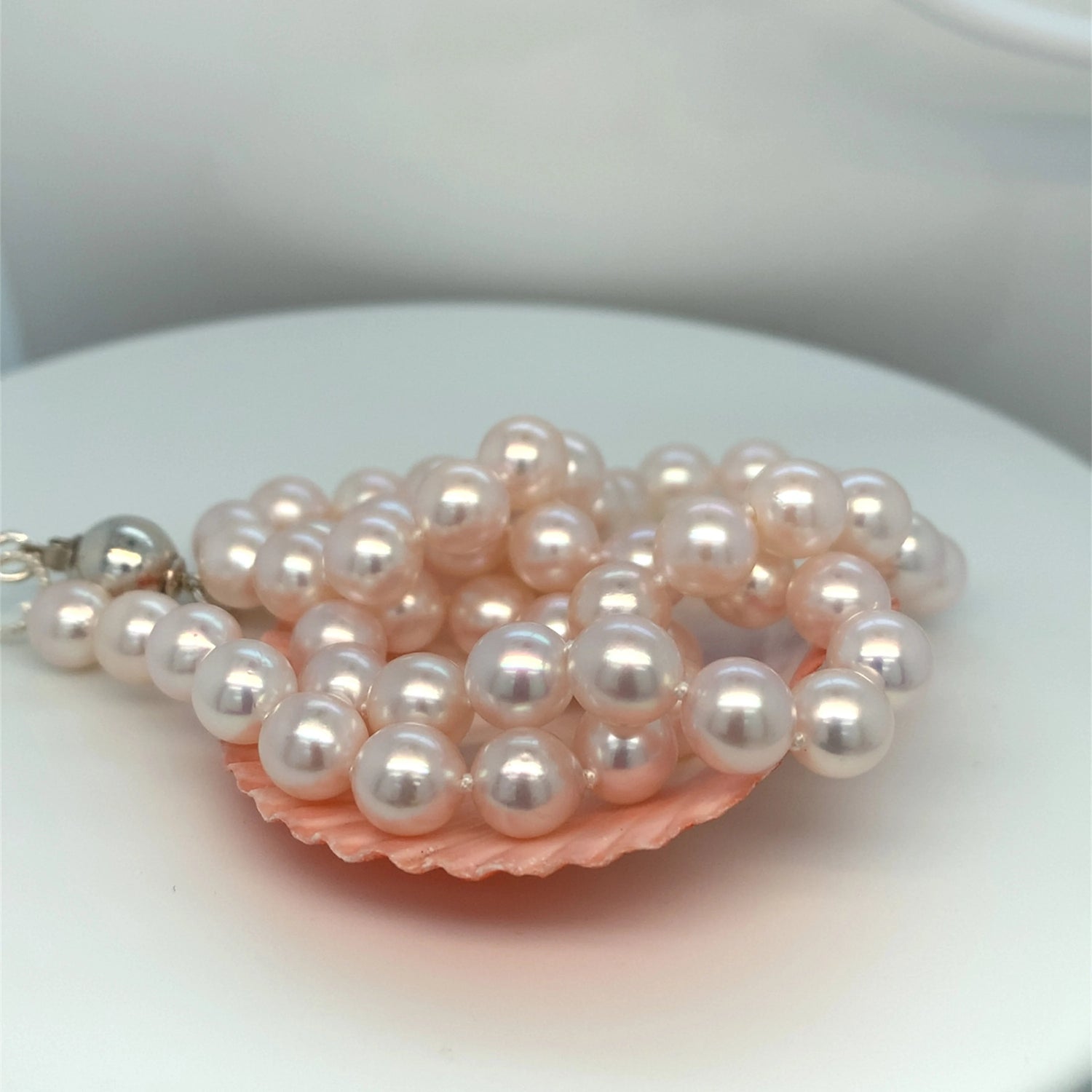The akoya pearl is a saltwater cultured pearl from the akoya oyster (Pinctada fucata martensii). Akoya are considered to be the classic pearl used for necklaces and other pearl jewelry, with perfect round shapes, bright mirror-like luster and neutral colors, akoya pearls are favored by most retailers and consumers as the classic pearl choice.

Akoya pearls are currently farmed in Japan, China and to a lesser extent, Vietnam, Thailand and Australia. The vast majority of the world's akoya pearls are produced in Japan, which is the undisputed akoya pearl producing center of the world. China was once a genuine contender, but mother nature all but destroyed the Chinese akoya industry in 2007.

An interesting piece of akoya pearl trivia is that the akoya oyster is the smallest commercially farmed, pearl-producing oyster. An average akoya pearl is only 7 mm, while an average South Sea pearl is in the 12 mm range. Akoya pearls are currently being harvested in sizes from as small as 1 mm up to the very rare 10-11 mm.
Akoya pearls are inherently round, although every harvest produces a percentage of baroque and keshi pearls, which tend to have the bright luster and shine common to the akoya, but a shape and look reminiscent of a freshwater or baroque South Sea. Akoya pearls, unless color-treated, have neutral colors and overtones. Most pearls are white to grey, with pink, green, or silver overtones. Occasionally, akoya pearls are blue with silver and pink overtones, but these colors are extremely rare. Akoya pearls are never naturally black – black akoya pearls have undergone either Cobalt-60 radiation treatment or treatment with an organic dye.
